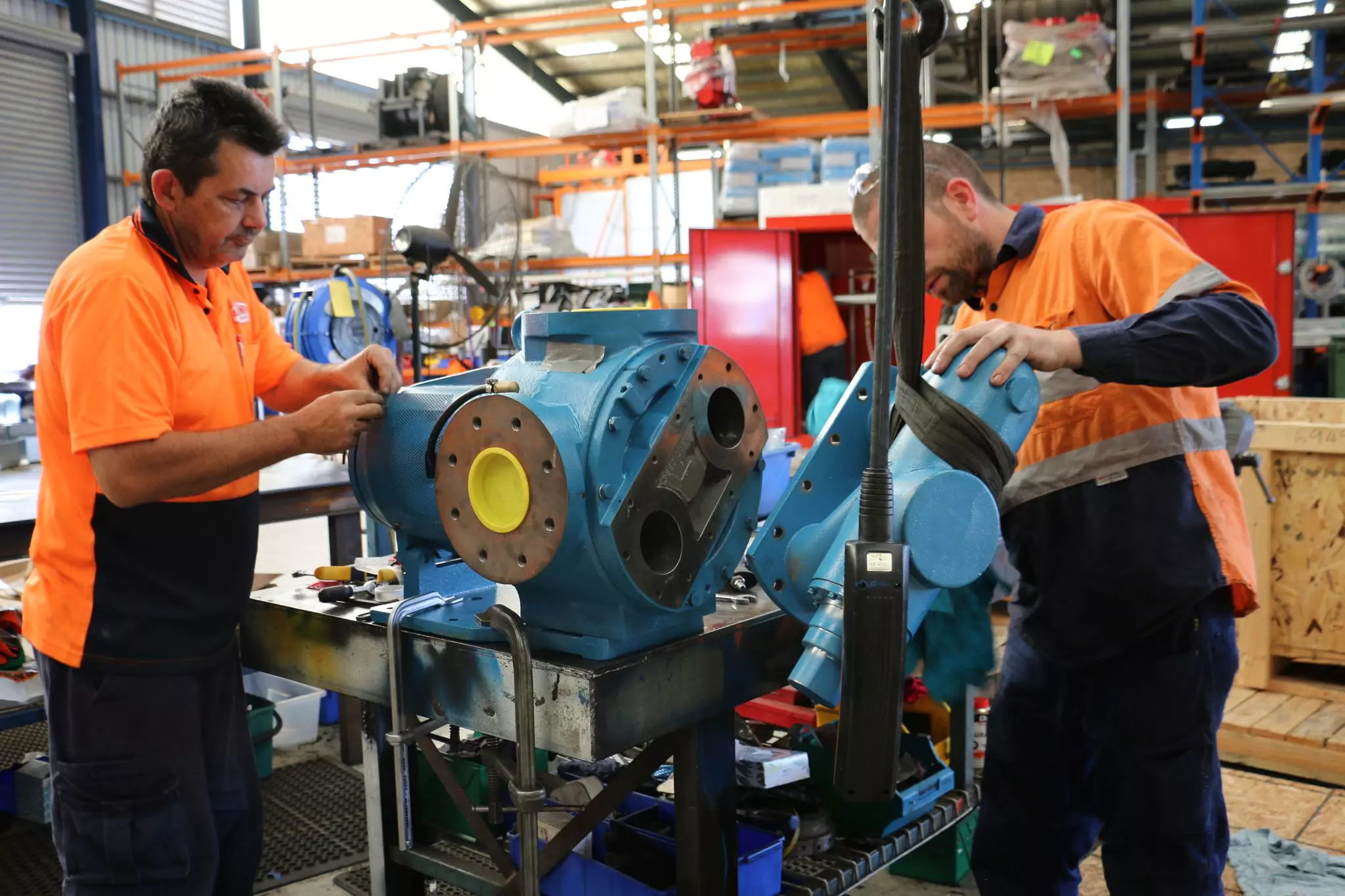
You’ll enjoy the All-Pumps experience. We’re certain.
Maintenance Capabilities
Maintenance Capabilities
Resources
Self-priming pumps are engineered to eliminate the need for external priming. They automatically evacuate air from the suction line, creating the vacuum required to draw liquid into the pump and commence operation. This functionality enhances efficiency in process plants, particularly where pumps are subject to frequent yet intermittent use.
Self-priming centrifugal pumps are well-suited to handling a wide range of fluids, including those containing entrained air. Their reliability and versatility make them a popular choice across diverse applications, from wastewater treatment to chemical processing.
The operating principle of a self-priming centrifugal pump can be divided into two phases: the priming mode and the pumping mode.
In priming mode, self-priming centrifugal pumps operate similarly to liquid-ring pumps. The rotating impeller generates a vacuum at its centre, drawing air from the suction line into the pump. At the same time, this action forms a cylindrical ring of liquid within the pump casing, creating a gas-tight seal that prevents air from recirculating from the discharge back to the suction line. Air bubbles become trapped in the liquid between the impeller vanes and are carried to the discharge port, where they are expelled. The liquid then returns to the reservoir within the pump housing by gravity.
As the process continues, liquid gradually rises in the suction line, displacing the remaining air. Once both the suction piping and pump casing are fully primed with liquid, the pump transitions into its normal pumping mode and begins continuous liquid discharge.
Trillium Technologies' WSP™ Self-Primer pumps are designed for versatility and reliability, capable of handling a range of fluids, including slurries and corrosive liquids, suitable for various industrial applications.

Choosing WSP™ self-priming pumps enhances productivity and reliability across industrial settings. Know more about WSP™ Self-Primer.
Self-Priming Capability
WSP™ pumps feature automatic priming, eliminating the need for manual intervention and enabling continuous operation—even with air or gas mixtures. This translates to significant time and labour savings on site.
Versatility and Fluid Handling
These pumps are designed to handle high solids content and varying fluid viscosities. They feature a proprietary “Buzzsaw” wear plate, which helps minimise clogging and improve overall efficiency.
Reduced Maintenance
Built for durability, WSP™ pumps are designed with fewer moving parts and extended maintenance intervals. The removable bearing casing further enhances service life by protecting and prolonging bearing performance.
Safety Features
WSP™ pumps are engineered with recessed bolt-locking and anti-rotation features to prevent accidental breaches or leaks, enhancing operational safety and reliability.